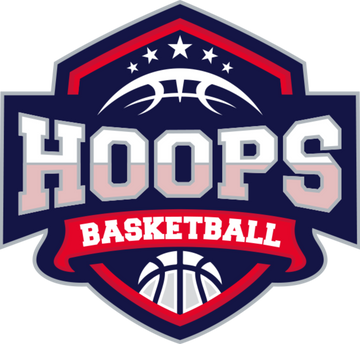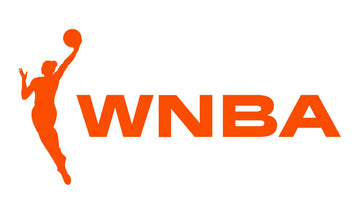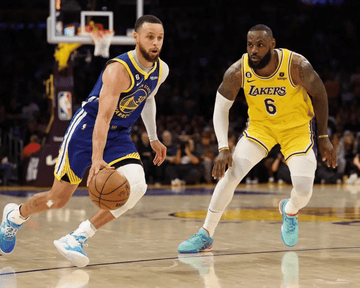On April 24, 1996, women’s basketball announced “We Got Next” as the NBA Board of Governors approved the concept of a Women’s National Basketball Association (WNBA) to begin play in June 1997.
Since that day in 1996 there have been many firsts for the WNBA: Val Ackerman — the first president of the WNBA; Sheryl Swoopes — the first player signed to the WNBA; Cynthia Cooper — the league’s first Most Valuable Player; the Houston Comets — the first WNBA Champions; Lisa Leslie — the first WNBA player to capture all three MVP awards (regular season, All-Star and Championship) in one season.
However, the very first for the league was a “to-do list.” With less than 15 months to tipoff, a league of its own began to unfold for the WNBA as each task was completed. The history of the WNBA follows:
On the Air . . .
Before a player was signed or a staff member was in place, the league announced its broadcast partnerships with NBC, ESPN and Lifetime Television. It was decided that the WNBA season would be played in the summer when the sports calendar was less crowded and the games could be televised live. During a successful inaugural season, more than 50 million viewers watched WNBA games on the three networks.
ESPN2 joined NBC and ESPN to televise WNBA games for the 2001 season and carried live coverage of the 2001 WNBA Draft for the first time. Lifetime, which had carried games during the first four seasons, continued as a partner, presenting Players’ Journal, a weekly half-hour magazine show highlighting the on and off-court lives of the league’s players and coaches. In 2001, WNBA games were broadcast to nearly 60 million fans in 23 different languages and 167 countries. New countries for the 2001 season included South Africa, Serbia and Montenegro.
The WNBA delivers an audience unique in sports. In-arena, gender breakdown is approximately 70-30 female-male. The TV audience is about 50-50 female-male, with a strong percentage of non-adult viewers.

The Players and the Teams. . .
Eight teams were announced for the league’s inaugural season. The Eastern Conference consisted of the Charlotte Sting, Cleveland Rockers, Houston Comets and New York Liberty while the Western Conference was comprised of the Los Angeles Sparks, Phoenix Mercury, Sacramento Monarchs and Utah Starzz. On January 16, 1997, the first 16 players were assigned to teams, and on February 27 an Elite Draft added two more players to each team, increasing team rosters to four. The Comets selected Tina Thompson, the Pac-10 Conference’s leading scorer, with the first pick of the Inaugural WNBA Draft. Margo Dydek, a 7-2 center from Poland, was selected first in the 1998 Draft by the Starzz, and two-time Associated Press Women’s Basketball Player of the Year Chamique Holdsclaw was the Washington Mystics’ No. 1 selection in the 1999 Draft. In 2000, the Cleveland Rockers selected Ann Wauters from Belgium as the first overall pick, and Australian Olympian Lauren Jackson went to the Seattle Storm with the No. 1 selection in 2001.The first of the player signings was announced on October 23, 1996, with Sheryl Swoopes and Rebecca Lobo joining the league. The duo were soon followed by Ruthie Bolton, Lisa Leslie, Cynthia Cooper, Michele Timms (the first international player) and many more WNBA hopefuls.
Since the inaugural season, the WNBA has expanded from eight teams to 16, with the Detroit Shock and Washington Mystics joining the league in 1998, the Minnesota Lynx and Orlando Miracle in 1999, and the Indiana Fever, Miami Sol, Portland Fire and Seattle Storm in 2000. The 2002 season will see 176 women play professional basketball in 256 regular-season WNBA games (schedule history: 32 games in 2001, 2000 and 1999, 30 in 1998, 28 in 1997).
With such tremendous growth, the WNBA and the Women’s National Basketball Players Association (WNBPA) announced on April 29, 1999 the league’s first collective bargaining agreement – a first of its kind in women’s team sports.

The Logos and the Uniforms . . .
With players and teams in place, the league began its next task of creating logos and uniforms. The red, white and blue official WNBA logo – “Logo Woman” – was selected from about 50 different designs. After developing an extensive list of choices, the team names were selected by the league and the teams based on numerous factors, including: a tie to the NBA team name in that market, a link to a key characteristic of each city or state and/or the creation of a name fitting the current sports landscape. The uniforms also underwent several designs, and on May 21, 1997, the WNBA unveiled the team uniforms — two shorts silhouettes and three jerseys.
Millions of Fans Join In . . . It’s a Ball Game . . .
The WNBA game consists of a 30-second clock, a 19-foot, 9-inch three-point line, two 20-minute halves, eleven-player rosters and a collegiate-regulation size ball. The WNBA’s signature orange-and-oatmeal basketball by Spalding is 28.5 inches in circumference and one inch smaller than the NBA’s regulation ball.
The inaugural WNBA season tipped off on June 21, 1997, with the New York Liberty taking on the Los Angeles Sparks at the Great Western Forum in Inglewood, Calif. A crowd of 14,284 watched as Sparks guard Penny Toler scored the first basket in WNBA history. The Liberty defeated the Sparks 67-57. Then on August 22, the WNBA league attendance surpassed the 1 million mark at America West Arena in Phoenix. In 2001, more than 2.5 million fans attended WNBA games – the most ever – as regular-season attendance averaged more than 9,000 fans for the fifth straight season. The WNBA welcomed its 10 millionth fan on September 1 at the STAPLES Center in Los Angeles.
Fans Get Connected . . .
In addition to television, the league website, WNBA.com, is an important tool in reaching fans. The site (www.wnba.com) offers the latest WNBA news, multimedia coverage, fan interaction with players and more. For its live cybercast of the 2001 WNBA Draft, WNBA.com recorded the highest single day traffic in the site’s five-year history. Traffic to WNBA.com during the 2001 WNBA Playoffs and Championship set a new record with 1 million total visits to the site, nearly a 40 percent increase compared to postseason traffic in 2000.

In the Community . . .
For the WNBA, the focus is three primary outreach initiatives: Read to Achieve, a year-round, league-wide initiative that promotes the value of reading and on-line literacy and encourages families and adults to read regularly with young children; Jr. NBA and Jr. WNBA, a support organization for recreational youth basketball leagues that connects players, parents and coaches in an effort to heighten awareness and participation in youth basketball; and the Sears WNBA Breast Health Awareness program, a partnership with the National Alliance of Breast Cancer Organizations (NABCO) to draw national attention to the issue of breast cancer and the importance of early detection.
League Showcases All-Stars . . .
On July 14, 1999, the league held the Inaugural WNBA All-Star Game at Madison Square Garden in New York, televised live on ESPN. The capacity crowd of 18,649 witnessed the incredible sportsmanship, teamwork, enthusiasm, fan involvement and in-arena excitement that characterizes the WNBA. The Western Conference All-Stars – led by the game’s Most Valuable Player and Los Angeles Sparks center Lisa Leslie – defeated the Eastern Conference 79-61.
All-Star excitement continued in 2000 as the game moved to the America West Arena in Phoenix on July 17. The West All-Stars defeated the East All-Stars 73-61 before a crowd of 17,717 as Houston’s Tina Thompson captured MVP honors. Leslie earned her second All-Star MVP award at the 2001 WNBA All-Star Game, played at the TD Waterhouse Centre in Orlando, Fla., on July 16 in front of 16,906 fans. The West claimed its third victory with an 80-72 defeat of the East. The 2002 WNBA All-Star Game will be held at the MCI Center in Washington, D.C., on July 15. ESPN will televise the game live for the fourth consecutive year.

We Got Game . . .
Women’s basketball has come a long way since its beginnings in 1892 when Senda Berenson adapted James Naismith’s basketball rules for women. And with the continued growth of the WNBA, the sport is sure to go even further. For more information on the WNBA and its history, log onto http://www.wnba.com.





